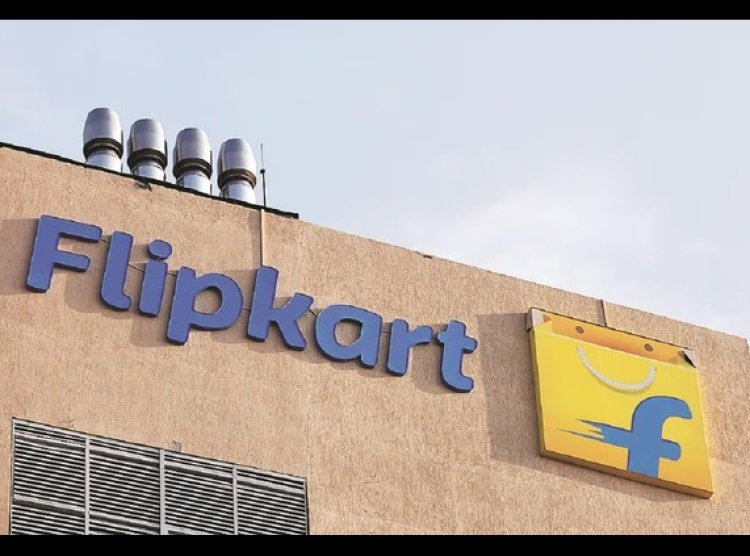Flipkart Minutes; Fast Delivery or Just a Flash in the Pan?
Flipkart dives into quick commerce with ‘Flipkart Minutes’—promising speedy deliveries. Will it outpace competitors or get lost in the rush?

In the rapidly evolving quick commerce sector, competition is intensifying with Walmart-backed Flipkart entering the fray. Zomato, for Q1 FY25, reported a notable rise in quarterly profit, primarily fueled by its quick commerce service, Blinkit. Founder Deepinder Goyal has predicted that Blinkit will surpass Zomato by 2025.
Meanwhile, Zepto is aggressively expanding its quick commerce model. Although financial specifics remain undisclosed, Chief Brand Officer Chandan Mendiratta recently announced the company's launch in Ahmedabad and revealed plans for an upcoming launch in Jaipur.
Adding to the excitement, the Economic Times reported two weeks ago that Amazon India is in talks with IPO-bound Swiggy about a potential deal involving its quick commerce business, Instamart.
Amidst this bustling activity, Walmart-owned Flipkart has plunged into the quick commerce arena, aiming to capture a share of the market with its service 'Flipkart Minutes.'
With its established e-commerce model, Flipkart is leveraging its strengths to succeed in this new venture. The service launched in Bengaluru’s tech and residential hotspots, including HSR Layout, Gunjur, Bellandur, and Kadubeesanahalli, offering a range of products from groceries to electronics within a quick 10 to 15-minute delivery window. The service is integrated into the e-commerce app.
Media reports suggest that the platform plans to operate 100 dark stores to support its quick commerce service during the festive season. Dark stores are mini warehouses used for efficient delivery.
Initially, Flipkart aimed to acquire a majority stake in Zepto, but after the deal fell through, they decided to enter the fast delivery arena on their own.
Deepti Karthik, fractional CMO of Sleepyhead, notes that Flipkart remains the market leader in the e-commerce segment. “With the rise of quick commerce, there is noticeable cannibalization, as q-commerce encroaches on the e-commerce market share. However, Flipkart’s strong foundation, evidenced by their one-day delivery service in 20 cities, positions them well to adapt to these changes.”
According to Karthik, the Walmart-owned platform has strength in tier-2 cities with a stronger focus on the East and North markets. They can target these areas for q-commerce expansion. “Amazon’s brand recall is stronger in metro areas. Flipkart can pursue the Bharat story by targeting tier-2 cities. They can focus on unbranded products and tap into that market,” she highlights.
Saurabh Parmar, fractional CMO, states that Flipkart's entry into the fast delivery sector was anticipated given the sector’s rapid growth and substantial funding. The strategy aims to fend off competition from quick commerce players poised to enter the e-commerce space.
"E-commerce's future hinges on profitability. While Blinkit is currently profitable on an adjusted EBITDA basis, it needs to achieve significant profits to justify its valuation, which will require higher costs. As Blinkit expands into tier-2 cities and beyond, it must gauge consumer demand for its products," he explains.
Launched in 2017, Flipkart Grocery reported 1.6 times year-on-year growth in its grocery business during the financial year 2024 compared to the previous year.
Vigyan Verma, founder of The Bottom Line, a brand consultancy firm, highlights that Flipkart has traditionally excelled in electronics, followed by apparel and beauty. These segments are their core strengths and should remain their focus. He remarks, "For Flipkart, consumer electronics could become a more significant part of their segment compared to groceries, which are typically less profitable."
Verma suggests that Flipkart Minutes should prioritize delivering high-value, high-stakes items quickly, setting itself apart from competitors like Blinkit, which focuses on low-value but essential needs and indulgences.
Parmar proposes that beyond groceries, Flipkart can drive profitability through advertising, loyalty programs, and private labels. By leveraging their existing customer data, Flipkart can create more localized and effective ads. Platforms like Zepto with their 'brand of the day' feature and Blinkit’s newly launched segment highlight the potential for significant advertising opportunities. Flipkart Minutes can capitalize on similar ad spots to boost revenue.
Looking ahead, Karthik believes that q-commerce and e-commerce will merge into a unified sector, leading to market consolidation. “With the space becoming too crowded for multiple players, the companies will merge, get acquired, or exit the market,” she says.

 Sumit Rawat
Sumit Rawat 










